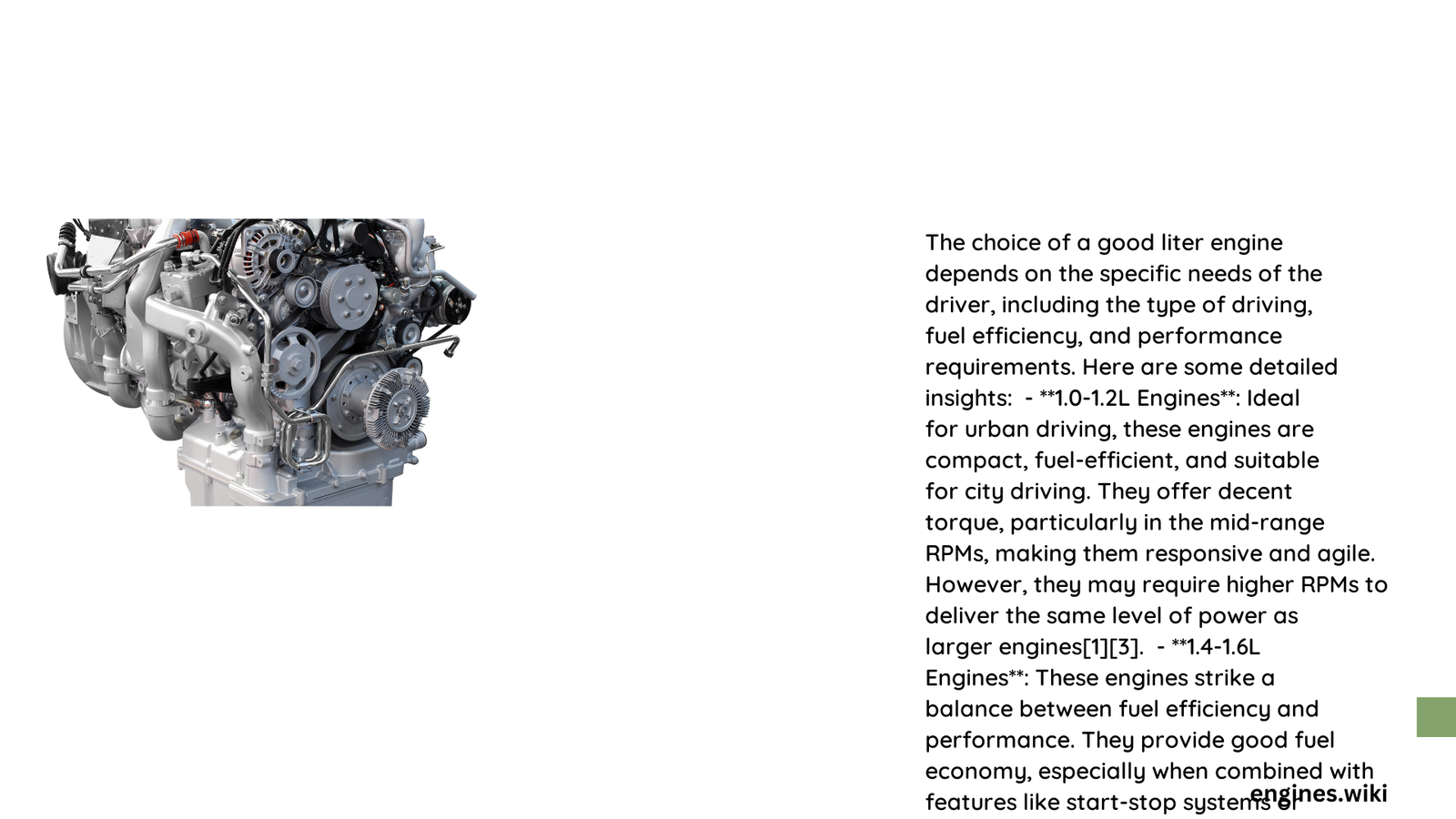When comparing engine sizes, particularly 2.0L and 3.0L variants, automotive enthusiasts and practical drivers seek a nuanced understanding of performance characteristics. The optimal engine size depends on multiple factors including driving conditions, vehicle type, fuel efficiency requirements, and personal performance expectations. This comprehensive analysis explores the intricate dynamics of engine displacement, providing insights into when smaller or larger engines deliver superior results across different automotive platforms.
What Makes Engine Size Matter?
Engine displacement represents the total volume of all cylinders in an internal combustion engine, directly influencing performance characteristics. The choice between 2.0L and 3.0L engines involves complex trade-offs between power, efficiency, and practical considerations.
Performance Variations Across Different Vehicles
| Vehicle Type | 2.0L Engine Characteristics | 3.0L Engine Characteristics |
|---|---|---|
| Sedan | Balanced efficiency | Enhanced power delivery |
| SUV | Adequate urban performance | Superior highway capabilities |
| Sports Car | Cost-effective option | High-performance potential |
How Does Fuel Efficiency Compare?

Fuel efficiency varies significantly between 2.0L and 3.0L engines, influenced by:
- Driving Conditions:
- City environments favor smaller engines
- Highway driving benefits from larger displacement
-
Turbocharging can mitigate efficiency differences
-
Diesel vs Gasoline Considerations:
- Diesel engines typically offer better long-distance efficiency
- Gasoline engines provide smoother urban performance
- Turbocharged variants reduce traditional displacement penalties
Why Choose a Specific Engine Size?
Factors Influencing Engine Selection
- Performance Requirements
- Acceleration needs
- Towing capabilities
-
Driving terrain
-
Economic Considerations
- Initial purchase price
- Long-term maintenance costs
- Fuel consumption expenses
Practical Recommendations
For most drivers, a 2.0L turbocharged engine offers:
– Balanced performance
– Better fuel economy
– Lower initial cost
– Reduced insurance expenses
3.0L engines excel when:
– Maximum power is critical
– Frequent highway driving occurs
– Towing or heavy load transportation is necessary
Technical Insights into Engine Displacement
Technological Advancements
Modern engineering has significantly reduced traditional displacement disadvantages:
– Advanced turbocharging
– Direct fuel injection
– Improved combustion technologies
Real-World Performance Metrics
Comparative analysis across multiple vehicle platforms demonstrates:
– 2.0L engines: 25-35 mpg average
– 3.0L engines: 20-28 mpg average
– Performance variance: 15-30% power difference
Expert Recommendations
Selecting the Right Engine
- Assess personal driving requirements
- Consider long-term ownership costs
- Evaluate performance expectations
- Factor in regional fuel prices
- Understand maintenance implications
Conclusion
Determining the ideal engine size transcends simple numerical comparisons. Technological innovations continue to blur traditional displacement boundaries, making individual assessment crucial.
Key Takeaway
No universal “best” engine size exists—optimal selection depends on specific user needs, driving conditions, and personal preferences.
References:
– Automotive Engineering Journal
– Fuel Efficiency Research
– Engine Performance Studies
